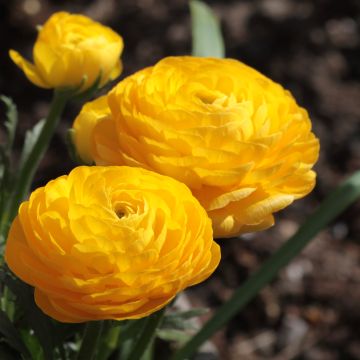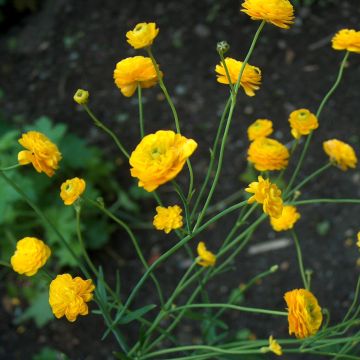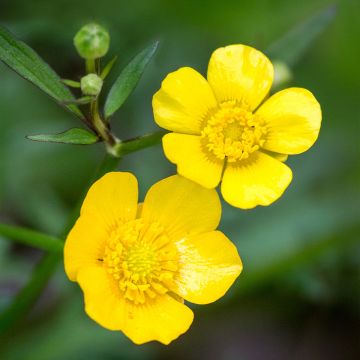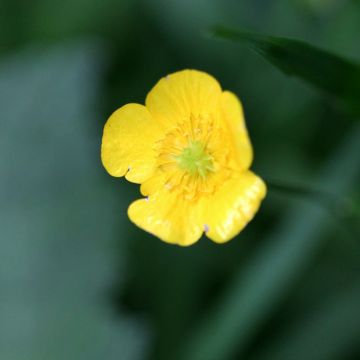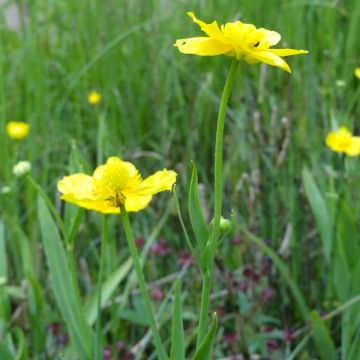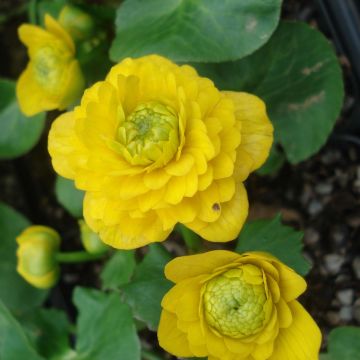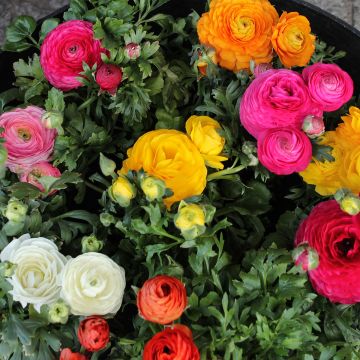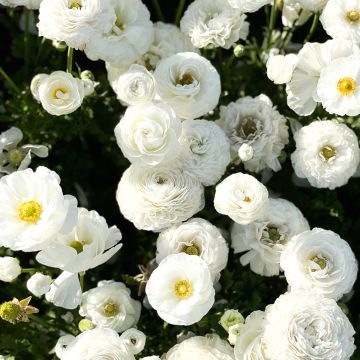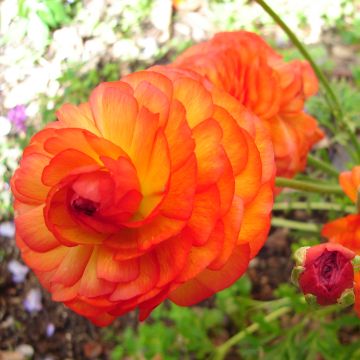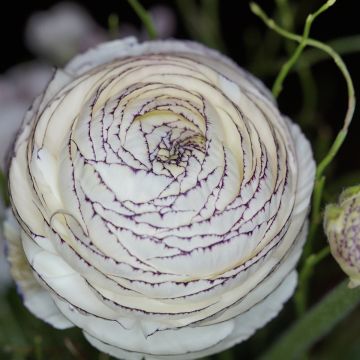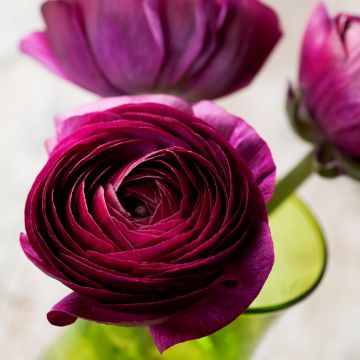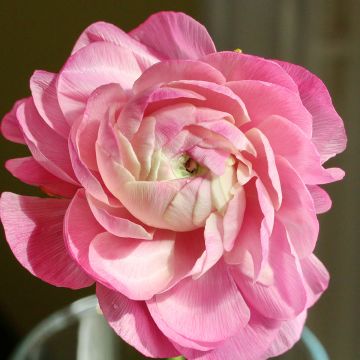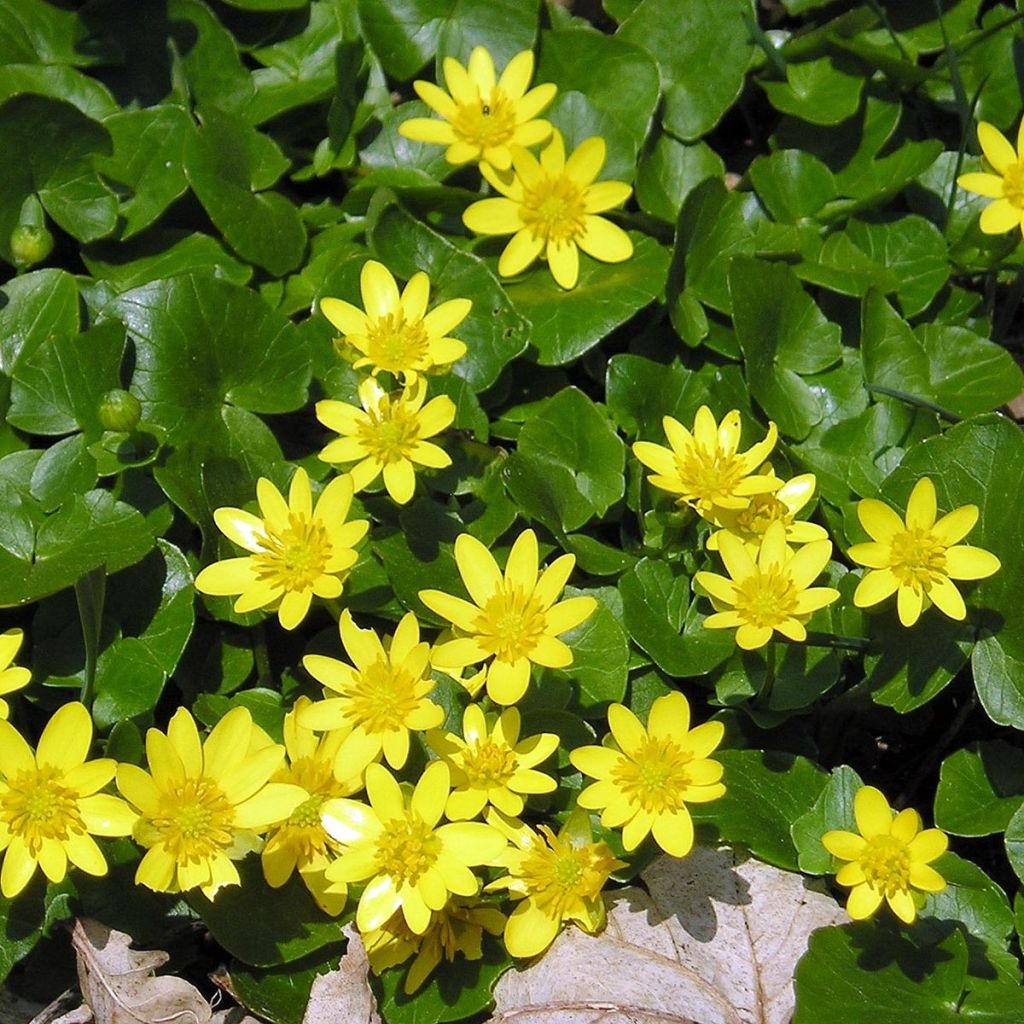

Ranunculus ficaria verna - Ficaire fausse-renoncule
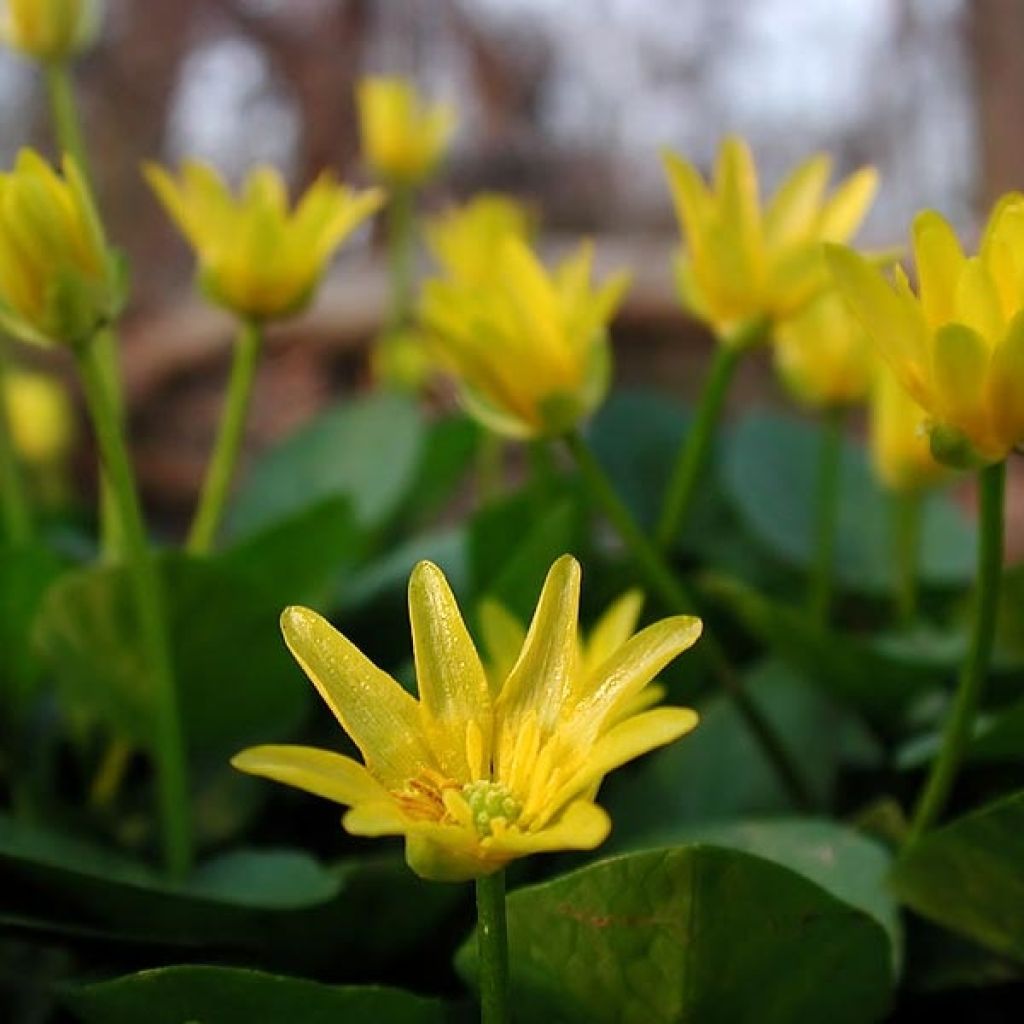

Ranunculus ficaria verna - Ficaire fausse-renoncule
Ranunculus ficaria verna - Lesser Celandine
Ranunculus ficaria verna
Lesser Celandine, Fig Buttercup, Pilewort
This small plant has invaded my garden this spring. It's everywhere and very, very difficult to remove. It's considered invasive. Why would you want to sell it? In my opinion, this false buttercup should be banned everywhere.
Jeanette, 08/04/2024
Why not try an alternative variety in stock?
View all →This plant carries a 6 months recovery warranty
More information
We guarantee the quality of our plants for a full growing cycle, and will replace at our expense any plant that fails to recover under normal climatic and planting conditions.
From €5.90 for pickup delivery and €6.90 for home delivery
Express home delivery from €8.90.
Does this plant fit my garden?
Set up your Plantfit profile →
Description
The Ranunculus ficaria verna, also known as Lesser Celandine, is a small plant from our European flora that will thrive in many regions that are not too dry in summer. It will spread quickly, forming elegant leafy carpets in winter and scattered with small bright yellow stars just before the arrival of spring. In shady and cool areas of the garden, sometimes neglected, the spring celandine eventually forms beautiful colonies. Plant it under the canopy of deciduous trees where it perfectly tolerates the competition from roots. A lovely ground cover, to be paired with the blue flowers of liverworts, bland anemones.
The Ranunculus ficaria verna, also known by its Latin names Ficaria verna and Ficaria ranunculoides or simply celandine, belongs to the family Ranunculaceae, just like our famous buttercup. It is native to Europe, western Asia, and North Africa, introduced to North America where it has sometimes become invasive. It is found in clear deciduous woodlands, where it flowers early in spring before the trees' leaves develop, at the edge of forests, but also in cool and humid places like riverbanks. It also likes meadows, embankments, and hedges, where it grows up to 1600 m (5249ft) altitude, always on relatively fresh soil.
It is a small perennial plant with brown and swollen roots forming small tubers. They ensure its vegetative multiplication and allow it to colonize the space more or less quickly. Its vegetation disappears at the end of spring, after flowering, which corresponds to its resting period. The lesser celandine spends the first part of winter as buds and develops its new foliage before flowering, in January-February depending on the climate.
Forming a small tuft of 5 cm (2in) in height, this celandine spreads quite rapidly over at least 30 cm (12in) on the ground. Its foliage is composed of heart-shaped leaves, 4 to 9 cm (2 to 4in) wide, thick, shiny, and dark green. The flowering takes place from March to May depending on the climate, sometimes as early as February. Clusters of foliage emerge from stalks 15-20 cm (6-8in) high, each carrying a solitary flower of 3 to 4 cm (1 to 2in) in diameter, composed of 6 to 12 oval and elongated petals, well separated, of a light and shiny yellow on the top. The flower opens in the morning and closes in the evening, even in cloudy or rainy weather. Numerous yellow stamens and carpels are central to the flower. The lesser celandine reproduces through spontaneous sowing. Before the vegetation disappears, the plant develops bulblets in the axil of the leaves. They detach at the same time as a small piece of stem with a bud. This small seedling falls to the ground and takes root, ensuring the multiplication of the celandine.
Being really easy to grow in ordinary soil, the lesser celandine has good hardiness (-20°C (-4°F)). It strongly prefers moist soils, even marshy ones, but also adapts easily to any good soil that is not too dry. It is also grown in pots to bloom on the terrace or balcony, from the end of winter. Plant it at the edge of a grove or in a countryside bed, in partial shade or morning sun, together with snowdrops, liverworts (Hepatica nobilis), lungworts, brunneras, or blue forget-me-nots, which have such complementary colours. It is also a good perennial for damp banks, even in partial shade, next to Chocolate Wings Rodgersias pinnata, or Brunette Actaea simplex, with their purple foliage.
Report an error about the product description
Plant habit
Flowering
Foliage
Botanical data
Ranunculus
ficaria
verna
Ranunculaceae
Lesser Celandine, Fig Buttercup, Pilewort
Cultivar or hybrid
Other Ranunculus - Buttercup
Planting and care
Ficaries thrive in any ordinary, moist to wet soil, even clayey. These young plants do not withstand long hot and dry summers. They appreciate sunny exposures but also develop in partial shade, or under deciduous trees with which they compete well in terms of root space. Plant them in early autumn or early spring. They do not require any maintenance.
Planting period
Intended location
Care
-
, onOrder confirmed
Reply from on Promesse de fleurs
Haven't found what you were looking for?
Hardiness is the lowest winter temperature a plant can endure without suffering serious damage or even dying. However, hardiness is affected by location (a sheltered area, such as a patio), protection (winter cover) and soil type (hardiness is improved by well-drained soil).

Photo Sharing Terms & Conditions
In order to encourage gardeners to interact and share their experiences, Promesse de fleurs offers various media enabling content to be uploaded onto its Site - in particular via the ‘Photo sharing’ module.
The User agrees to refrain from:
- Posting any content that is illegal, prejudicial, insulting, racist, inciteful to hatred, revisionist, contrary to public decency, that infringes on privacy or on the privacy rights of third parties, in particular the publicity rights of persons and goods, intellectual property rights, or the right to privacy.
- Submitting content on behalf of a third party;
- Impersonate the identity of a third party and/or publish any personal information about a third party;
In general, the User undertakes to refrain from any unethical behaviour.
All Content (in particular text, comments, files, images, photos, videos, creative works, etc.), which may be subject to property or intellectual property rights, image or other private rights, shall remain the property of the User, subject to the limited rights granted by the terms of the licence granted by Promesse de fleurs as stated below. Users are at liberty to publish or not to publish such Content on the Site, notably via the ‘Photo Sharing’ facility, and accept that this Content shall be made public and freely accessible, notably on the Internet.
Users further acknowledge, undertake to have ,and guarantee that they hold all necessary rights and permissions to publish such material on the Site, in particular with regard to the legislation in force pertaining to any privacy, property, intellectual property, image, or contractual rights, or rights of any other nature. By publishing such Content on the Site, Users acknowledge accepting full liability as publishers of the Content within the meaning of the law, and grant Promesse de fleurs, free of charge, an inclusive, worldwide licence for the said Content for the entire duration of its publication, including all reproduction, representation, up/downloading, displaying, performing, transmission, and storage rights.
Users also grant permission for their name to be linked to the Content and accept that this link may not always be made available.
By engaging in posting material, Users consent to their Content becoming automatically accessible on the Internet, in particular on other sites and/or blogs and/or web pages of the Promesse de fleurs site, including in particular social pages and the Promesse de fleurs catalogue.
Users may secure the removal of entrusted content free of charge by issuing a simple request via our contact form.
The flowering period indicated on our website applies to countries and regions located in USDA zone 8 (France, the United Kingdom, Ireland, the Netherlands, etc.)
It will vary according to where you live:
- In zones 9 to 10 (Italy, Spain, Greece, etc.), flowering will occur about 2 to 4 weeks earlier.
- In zones 6 to 7 (Germany, Poland, Slovenia, and lower mountainous regions), flowering will be delayed by 2 to 3 weeks.
- In zone 5 (Central Europe, Scandinavia), blooming will be delayed by 3 to 5 weeks.
In temperate climates, pruning of spring-flowering shrubs (forsythia, spireas, etc.) should be done just after flowering.
Pruning of summer-flowering shrubs (Indian Lilac, Perovskia, etc.) can be done in winter or spring.
In cold regions as well as with frost-sensitive plants, avoid pruning too early when severe frosts may still occur.
The planting period indicated on our website applies to countries and regions located in USDA zone 8 (France, United Kingdom, Ireland, Netherlands).
It will vary according to where you live:
- In Mediterranean zones (Marseille, Madrid, Milan, etc.), autumn and winter are the best planting periods.
- In continental zones (Strasbourg, Munich, Vienna, etc.), delay planting by 2 to 3 weeks in spring and bring it forward by 2 to 4 weeks in autumn.
- In mountainous regions (the Alps, Pyrenees, Carpathians, etc.), it is best to plant in late spring (May-June) or late summer (August-September).
The harvesting period indicated on our website applies to countries and regions in USDA zone 8 (France, England, Ireland, the Netherlands).
In colder areas (Scandinavia, Poland, Austria...) fruit and vegetable harvests are likely to be delayed by 3-4 weeks.
In warmer areas (Italy, Spain, Greece, etc.), harvesting will probably take place earlier, depending on weather conditions.
The sowing periods indicated on our website apply to countries and regions within USDA Zone 8 (France, UK, Ireland, Netherlands).
In colder areas (Scandinavia, Poland, Austria...), delay any outdoor sowing by 3-4 weeks, or sow under glass.
In warmer climes (Italy, Spain, Greece, etc.), bring outdoor sowing forward by a few weeks.

































